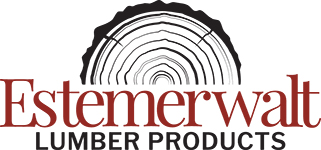by Kevin Daum, Stratford Financial
Article excerpted from Log Homes Illustrated, April 2008
The market is down, money is cheap, and custom wood homes’ special nature comes to the forefront at these times.
With real estate values dropping, lenders tightening and home construction slowing down, why would anyone in their right mind think this is a good time to take on building a log home? Well, before you sign me up for the straitjacket, you might want to take a moment and assess what is actually happening in the custom-home markets today.
Certainly, if one is to believe the media panic these days, the sky is falling where real estate is concerned, and we will all soon lose our houses to foreclosure. Most likely there is a bit of exaggeration in the cries of the doomsday reporters, but truly the market is slowing down, and prices in many areas are dropping. But log homes, like other custom homes, aren’t subject to the same volatility as big business manufacturing little boxes made of ticky-tacky for suburbia.
Granted the statistics can seem scary. According to the various media reports, national delinquencies and foreclosures are in the millions, and prices are slumping anywhere from 5 percent to 25 percent, depending upon the geographic area. Construction starts are down by more than 25 percent across the country. There is no question that a change is occurring in the real estate climate, and values are being affected. It’s very likely that sale prices will continue to drop over the next year or two, and it will probably take two to four years before we see all of the inventory clear and a return to solid appreciation in value.
Still, instead of lumping all the housing trends together to create a panic, there is more to be gained by examining the facts of this correction as it relates specifically to the custom-home niche that log homes fit into.
Most of the foreclosures occurring today are happening at the lowest end of the market. Builders who created large tracts of production homes have seen their aggressive sales tactics to under-qualified first-time buyers backfire, leaving whole developments half empty. Luckily, these projects are mostly affecting pockets of real estate without devastating all of the surrounding areas or the higher end of the market. Most custom homes are in the upper range of value in areas that are generally more established with a mix of homeowners who are generally not first-time homebuyers.
The slowdown in construction starts mostly reflects these large-scale builders, who are now slowing down their production to fit the changing market. Meanwhile, custom-home building permits are remaining relatively steady, as they have for the last 20 years.
Custom-home buyers in the past have continued to build steadily, even through downturns such as those in the late ’80s and early ’90s. Several mitigating factors tend to keep log homes and other custom projects going up while the rest of the market sits on the sidelines.
First of all, most custom-home consumers are in it for the long haul. Log homes especially are the homes dreams are made of. Many consider their log home to be the last home they will have. This motivation allows consumers to look at their project within the context of long-term appreciation in real estate, which has performed well over any 10-year period since the Great Depression, regardless of interim slumps.
If you have been planning your project for several years and expect to move in and stay in the home long term, it’s unlikely you will want to derail your project from its current path as long as you can still afford to build. In many cases, the planning and permitting processes are more likely to dictate your timing for starting construction than temporary market conditions.
In down markets, custom-home buyers have some financing advantages over ordinary homebuyers. Despite the difficulties in the credit markets, the larger portfolio banks are currently the prime sources for financing, while the rest of the lending institutions are struggling. These same banks have always been the best resource for log-home construction loans, particularly the one-time-close loan products that wrap in permanent financing with your construction loan. This type of loan can protect your project in a downward market since it doesn’t need an appraisal to roll to the permanent loan, eliminating financing concerns in a declining market. A knowledgeable mortgage broker, experienced in construction financing, can help you find the right bank product to bring your project to the finish line.
Additionally, downward-trending real estate markets are traditionally accompanied by lower interest rates. The Federal Reserve has already dropped the rates to keep the economy moving. These lower rates result in lower financing costs during construction and ultimately lower house payments for you in the long run. Another benefit of the declining values is that it creates justification for a lower-value assessment for your property when it’s complete. This results in lower property taxes, creating more monthly savings.
A slowdown in construction means that there is an abundance of labor and materials on the market today. After a decade of strong demand pushing up the costs of materials and making labor expensive and scarce, inventories are piling up, and many people in the construction industry are looking for work. Cost of construction is already declining in many regions. You can take advantage of this cost reduction to keep your budget in line with the values of the area, regardless of whether they are stable or declining.
Careful planning will help you keep your project on track and allow you to take advantage of the benefits of building in a declining market.
Kevin Daum is the author of the comprehensive, custom-home guide Building Your Own Home For Dummies and What the Banks Won’t Tell You: How to Get the Most Out of Your Mortgage. As CEO of Stratford Financial, he has financed hundreds of dream homes. He can be reached at kevin@stratfordfinancial.com.


